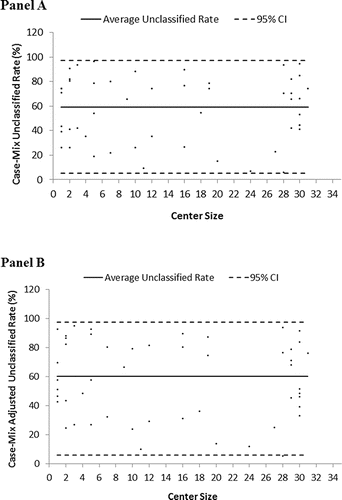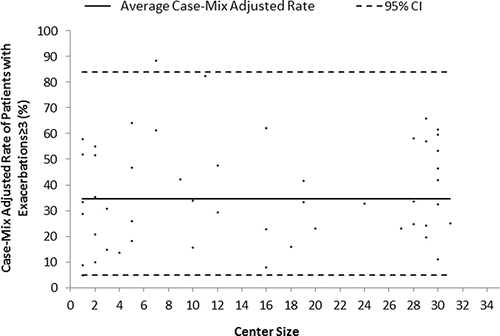Figures & data
Table 1. Patients characteristics across clinical phenotypes.
Table 2. Patients characteristics across GOLD stages of airflow limitation.
Figure 1. Unadjusted and casemix-adjusted prevalence of the unclassified phenotype across participating centers. Distribution of unclassified patients across centers: (A) Crude prevalence of patients without sufficient diagnostic testing for phenotypical characterization across centers. (B) Estimated casemix-adjusted prevalence of unclassified patients. We obtained predicted center-related probabilities from a random-intercept logistic regression model adjusted for age, sex, co-morbidities, FEV1%, body mass index, smoking habit, and therapy regimens.

Figure 2. Casemix-adjusted prevalence of patients with three or more exacerbations in the previous year across participating centers. Points represent the estimated casemix-adjusted prevalence of patients with three or more exacerbations in the previous year at each center. We obtained predicted center-related probabilities from a random-intercept logistic regression model adjusted for age, sex, co-morbidities, FEV1%, body mass index, smoking habit, and therapy regimens.

